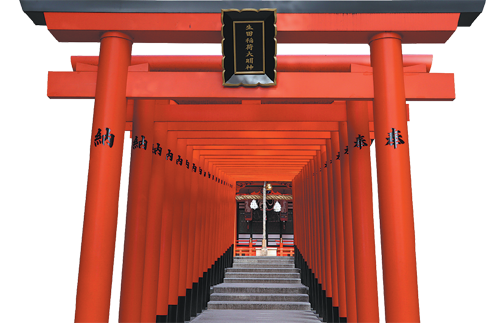
Editor’s note: Amity between the people holds the key to sound state-to-state relations. China Daily will come out with a series of stories highlighting Chinese cities’ special connections with sister cities, mutual understanding, trust and friendship between peoples of different countries and cultural backgrounds, and shining light on “city diplomacy”.
As the Japanese saying goes: “Don’t walk behind me; I may not lead. Don’t walk in front of me; I may not follow. Just walk beside me and be my friend.” While this embodies companionship, it only partially captures the dynamic and enduring partnership between Tianjin in northern China and Kobe in western Japan. Their relationship is a fascinating dance of sisterhood and mutual support, forged over decades of collaboration since the two became friendship cities.
China and Japan normalized their relations in September 1972, setting the stage for interactions at all levels. Just a year later, in 1973, Tianjin and Kobe embarked on a new journey of friendship. On June 24, 1973, they signed a friendship city agreement, the first of its kind between a Chinese city and a Japanese city. The pact marked the beginning of a relationship that transcends national and political boundaries, forging a special bilateral bond.
More than 50 years later, Kenji Takahashi makes his daily commute along the tranquil Haihe River in Tianjin. As Takahashi walks along the river, he can see the striking similarities between Tianjin and his hometown Kobe.
As the former representative of Kobe in Tianjin, Takahashi sees a story rooted in their shared history — both were bustling ports and gateways to their respective countries, each boasting a rich maritime heritage.
Yet, it was their shared vision for the future that truly cemented their connection. As China began its reform and opening-up, Kobe, with its advanced infrastructure and industrial prowess, emerged as a valuable partner, offering experience and support.
“In the 1980s, Tianjin Port faced challenges of congestion and outdated infrastructure,” Takahashi said. “Recognizing the need for improvement, Kobe city sent delegations to offer guidance and expertise. They proposed a comprehensive long-term renovation plan for the Port of Tianjin, aimed at enhancing its efficiency and competitiveness in the maritime industry.”
This collaboration served as the bedrock for development of Tianjin Port and stands as a milestone in the enduring ties between Tianjin and Kobe, he added.
Today, Tianjin ranks eighth in the American Journal of Transportation’s Top 100 Container Ports. Customs data showed that in the first half of the year, Tianjin Port has cumulatively completed a cargo throughput of 248 million metric tons, a 3.1 percent year-on-year rise, and a container throughput of 11.88 million TEUs (20-foot equivalent units), an increase of 4.6 percent year-on-year. The Port of Kobe, which ranked third in 1990, now stands at 65th.
It is no wonder that Takahashi, a frequent visitor to Tianjin’s port, marvels at its state-of-the-art infrastructure; the seamless, automated operations; and the sheer scale of activity.